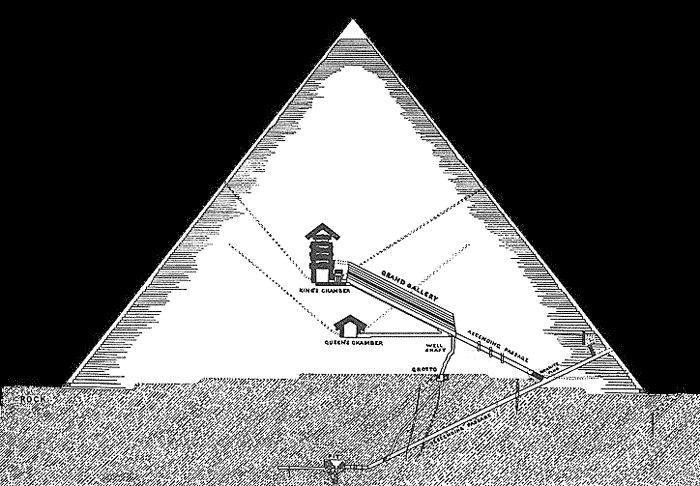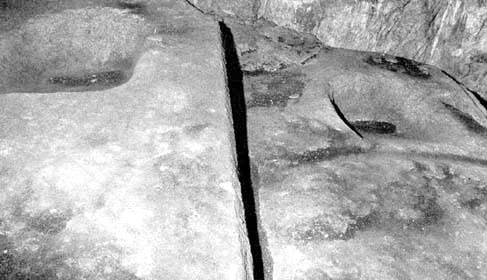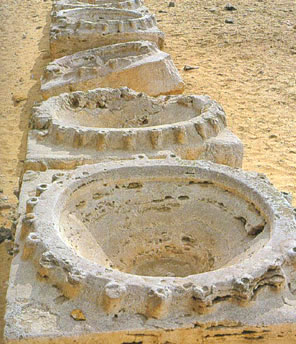|
from
PyramidOfMan Website It is argued that these small compartments were built above the ceiling of the burial chamber to relieve the stress of weight that could crack the chamber's ceiling. Some 38 blocks or more, each weighing about 50 to 80 tonnes were placed on top of the ceiling. Above these four granite chambers is a limestone gable, which it is said, was designed to distribute the weight to the north and south walls of the burial chamber. Modern architects and engineers disagree that these chambers function to relieve or distribute the weight of the pyramid pushing down on the chamber below. Why have so many chambers when a single gable could be built above the flat ceiling of the King's chamber to distribute the weight from above to the walls?
One might even ask why the Queen's chamber, being situated
lower in the pyramid's structure and made of a softer and therefore less
structurally sound stone, would not need similar protection.
If not, then they would had to have made an extra trip all the way down the Nile to Aswan, a distance of more than 800 kilometers, to quarry the extra granite necessary for the job.
If you roll your mouse
over the picture above, an alternative layout can be seen in which
the supposed problem of the gabled vault above the King's Chamber
pushing on the south end of the Grand Gallery is avoided simply by
moving the passage system up and to the north of its present position.
The quarrying, dressing, transporting and positioning high in the upper
region of the pyramid of some two to three thousand tonnes of granite
could have been easily avoided in this way had the builders been
concerned about the proximity of the vaulted ceiling of the King's
Chamber to the Grand Gallery's south wall.
Bowls in Campbell's
chamber For what use these basins were intended is another mystery. According to Petrie's analysis, these might have been to hold the butt ends of beams which supported the sloping roof-blocks during the building. It is possible, however, that oil, water or honey or some other purifying substance was poured into the bowls. Purification bowls have been found from the Old Kingdom such as the nine alabaster bowls found in the court of Niuserre's sun temple. These measure about 1.18 meters in diameter.
Borchardt suggested that they may have been used to store the blood of slaughtered sacrificial beasts but this has been doubted due to the lack of the accompanying evidence that is usually found at such sites.
Fifth Dynasty
Purification Bowls The pouring of purifying liquid into the bowls inside the top 'relieving' chamber could have been viewed as anointing the crown of the gigantic statue of Osiris, or anointing the Djed Pillar inside the pyramid of the Khnum-Khufu.
|



